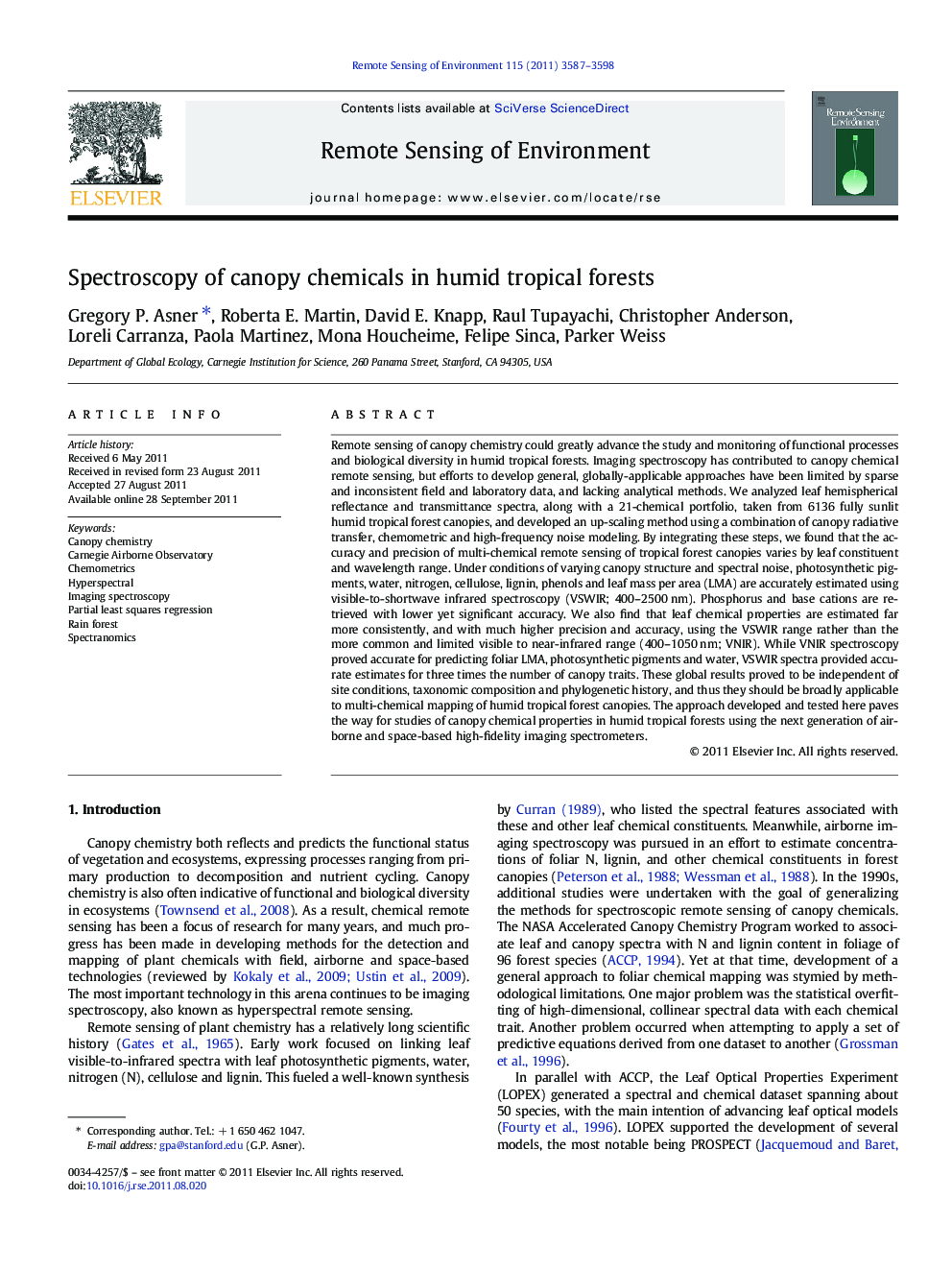| Article ID | Journal | Published Year | Pages | File Type |
|---|---|---|---|---|
| 4459502 | Remote Sensing of Environment | 2011 | 12 Pages |
Remote sensing of canopy chemistry could greatly advance the study and monitoring of functional processes and biological diversity in humid tropical forests. Imaging spectroscopy has contributed to canopy chemical remote sensing, but efforts to develop general, globally-applicable approaches have been limited by sparse and inconsistent field and laboratory data, and lacking analytical methods. We analyzed leaf hemispherical reflectance and transmittance spectra, along with a 21-chemical portfolio, taken from 6136 fully sunlit humid tropical forest canopies, and developed an up-scaling method using a combination of canopy radiative transfer, chemometric and high-frequency noise modeling. By integrating these steps, we found that the accuracy and precision of multi-chemical remote sensing of tropical forest canopies varies by leaf constituent and wavelength range. Under conditions of varying canopy structure and spectral noise, photosynthetic pigments, water, nitrogen, cellulose, lignin, phenols and leaf mass per area (LMA) are accurately estimated using visible-to-shortwave infrared spectroscopy (VSWIR; 400–2500 nm). Phosphorus and base cations are retrieved with lower yet significant accuracy. We also find that leaf chemical properties are estimated far more consistently, and with much higher precision and accuracy, using the VSWIR range rather than the more common and limited visible to near-infrared range (400–1050 nm; VNIR). While VNIR spectroscopy proved accurate for predicting foliar LMA, photosynthetic pigments and water, VSWIR spectra provided accurate estimates for three times the number of canopy traits. These global results proved to be independent of site conditions, taxonomic composition and phylogenetic history, and thus they should be broadly applicable to multi-chemical mapping of humid tropical forest canopies. The approach developed and tested here paves the way for studies of canopy chemical properties in humid tropical forests using the next generation of airborne and space-based high-fidelity imaging spectrometers.
► Spectro-chemical signatures of 6136 tropical forest canopies were analyzed. ► Accuracy and precision varies by chemical constituent and wavelength range. ► Results are more accurate with 400-2500 nm than with 400-1050 nm measurements. ► Results are applicable to multi-chemical mapping of humid tropical forest canopies.
